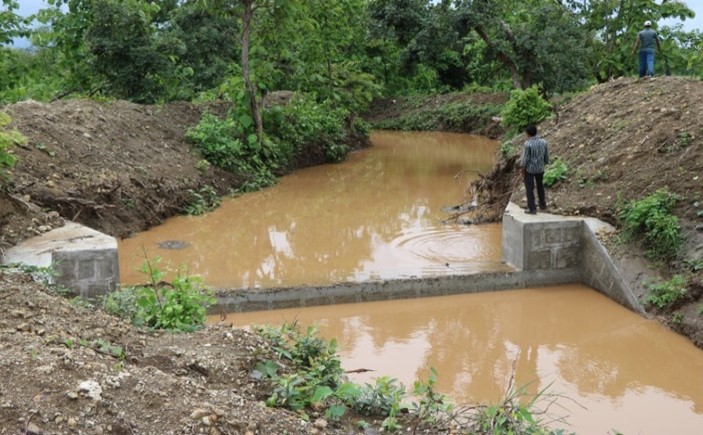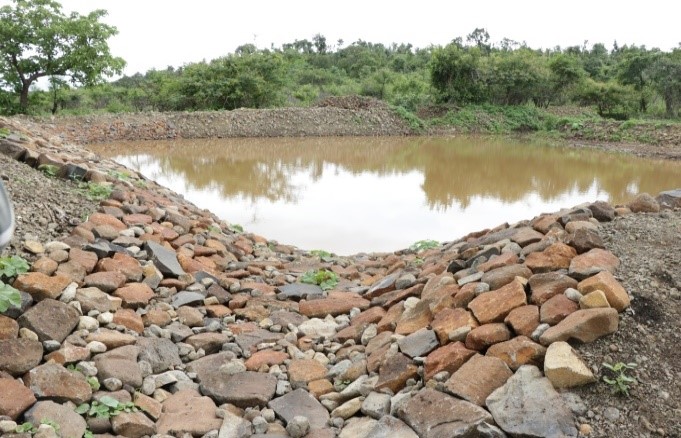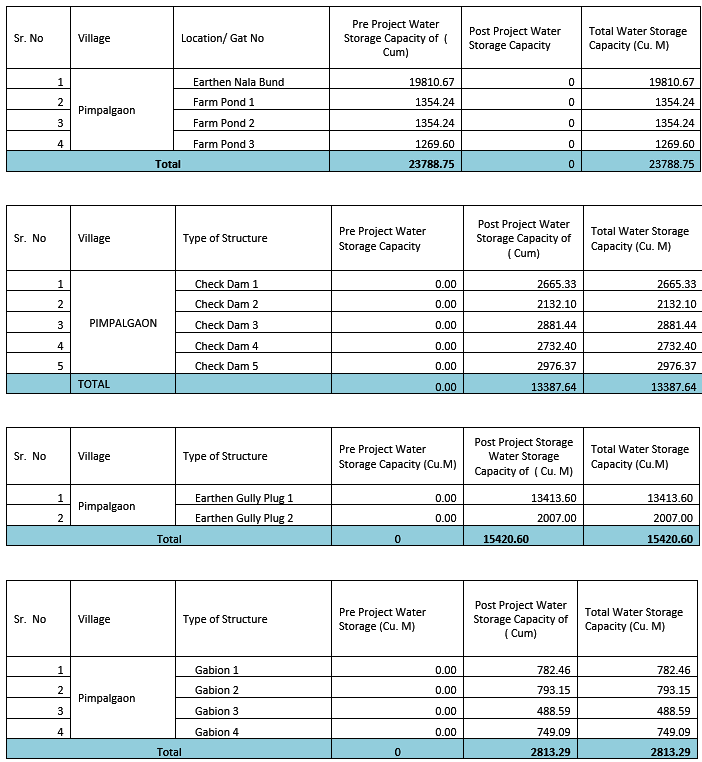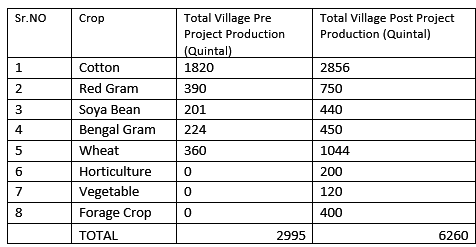

Pimpalgaon, a small, interior and hilly village from Arvi block of the Wardha district is at the upstream side of the medium irrigation project and as such has no benefit from the project. Instead rain water from the catchment area of the village used to fill the medium irrigation dam and the village itself used to face the problem of the water scarcity. In terms of demographics there are 84 families with 334 inhabitants living in the village. Out of total population171 are men and 163 are women. In Pimpalgaon 5 families belong to the landless category and the 3 families to the scheduled tribe category.
The village has a total geographical area of 579.08 ha of which 433.22 ha is the cultivable land and 34.64 ha is the waste land which is not suitable for cultivation. There are also 111.24 ha which is used as a grazing land for the cattle of the village. The village had only 111.24 ha of land which has a seasonal source for irrigation water. Total 321.98 ha land is rain fed land and fully dependent on the rain water for irrigation. These real conditions had the strong bearing on the cropping patter which has been conservative in nature.
In pre project condition Kharip season was the main cropping season most of the time under normal average annual rainfall conditions. Farmers followed traditional cropping pattern with crops like soya bean, red gram, cotton and sorghum. If the particular year had good rain then during Rabbi season the crops like Bengal gram, ground nut and wheat were used to be cultivated traditionally. The area under crop during summer was negligible as there was water scarcity.
Water shortage, rain fed agriculture, low agricultural productivity, mounting debts, drought conditions, etc. became the limiting factors for the development of the village and at the core of all this was the core issue and that was “WATER SCARCITY.” During the initial studies it was realized that the village has the great potential for the soil and water conservation, water harvesting, surface water storage, ground water recharge and these could effectively contribute to the availability of the water. Facing these problems from years and decades community urged for the solution to this water scarcity. As the village was in real need of the support it was proposed for the HRDP project to HDFC Bank with an initial specific emphasis on the water resources regeneration, development, and strengthening and water management. HDFC Bank considered the village for the project under HRDP. In the year 2014 HDFC Bank supported this village under Holistic Rural Development Programme (HRDP).
Based on the ground realities, field conditions, site surveys the water resource development plan was prepared and implemented in the participatory approach with the active involvement of the community.
To increase the water availability area treatment and drainage treatment plans were implemented. In terms of area treatment 20 ha waste land and 200 ha cultivable land is treated. These treated lands helped greatly in conserving rain water in-situ and increase soil moisture and also recharge the ground water. The waste land treated is providing the grass which is a good fodder for the cattle.
The key treatment was drainage treatment. Under this 4 gabion structures constructed, 2 Earthen Gully Plugs constructed and 5 cement masonry structures are constructed. All these structures have helped to the rain water conservation, harvesting, storage and the ground water recharge in a complimentary manner.


As an impact of all the above treatments soil moisture increased, ground water recharge, surface water stored in cement check dams and earthen gully plugs. Check dam was directly available, recharged ground water was available in terms of well water. The water which is made available with so much of efforts and inputs should be used judiciously. With this consideration and view water saving management devices like sprinkler was installed on demonstration basis at 7 locations. Area under irrigation has been increased by 120 acres due to the different interlinked


project interventions. There is increase in the per acre crop production for all the crop as per the table given below. This increase is mainly due to the irrigation water which is available for the rabbi season and extended rabbi season. The increased availability of the water and the inputs in terms of the meetings, trainings and exposers have encouraged farmers for the crop diversifications. The farmers have switched to newer crop. It includes horticulture 10 acres, vegetables 10 acres and fodder crops on 4 acres. In case of one EGP structure 8 acre area of Naresh Chindhuji Pandram has come under irrigation of a farmer who is taking crops like chickpea, red gram and cotton as a multi cropping approach which is a shift from traditional mono cropping approach.
Comparative analysis of the crop production
Pre and Post Total Agriculture production (quintals) in Pimpalgaon (Arvi, wardha)


Pre and Post project Comparative Graph of area under cop Pimpalgaon (Arvi, wardha)

